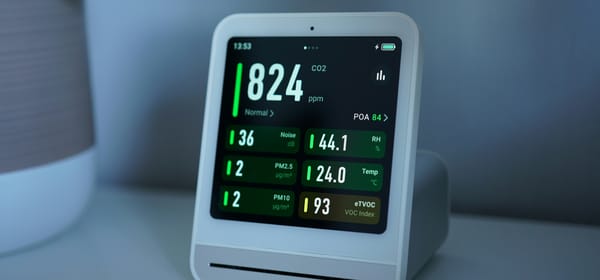Time, Trust, and Trials: Rethinking Research Through Slow Design

Clinical research is often built for speed: timelines are tight, protocols are rigid, and participant experiences are frequently treated as logistical hurdles. But what happens when we shift the focus from control to care, from efficiency to reflection? This post explores how slow design, a philosophy born in response to hyper-optimization, can reshape the way we design clinical studies. Rooted in patience, attention, and presence, slow design offers a powerful counter-narrative: that meaningful research is about how we invite people into the process of being studied.
Introduction
Speed has become a virtue in clinical research. We speak of fast recruitment, rapid trials, accelerated approvals. But beneath the surface of these metrics lie human stories: participants confused by consent forms, patients lost to follow-up, communities underrepresented in datasets because we didn’t slow down enough to reach them.
The idea of “slowing down” may seem counterintuitive in an industry where urgency can be a matter of life or death. But slow design isn’t about delay, it’s about depth. It invites us to examine how time, trust, and attention shape not only outcomes but the quality of participation itself.
By bringing the principles of slow design into clinical research, we can reimagine protocols not as rigid scripts, but as acts of care.
What Is Slow Design?
Originating in the early 2000s, slow design emerged as a response to fast-paced, mass-market design processes. It draws inspiration from the Slow Food and Slow Living movements, reclaiming time as a material for intention, not scarcity.
Core principles of slow design include:
- Revealing: Encouraging awareness and understanding over time
- Reflective: Prioritizing contemplation and emotional engagement
- Open: Embracing ambiguity and iteration
- Playful: Making room for wonder, exploration, and emergence
- Slowness: Accepting time as a resource, not an obstacle
- Careful: Designing with attention to relationships, systems, and consequences
In healthcare, these principles can feel radical. But they are not incompatible with rigor. They simply ask: what is the experience of those we study, and do we care enough to design for it?
Applying Slow Design to Clinical Research
1. Protocols as Experience
A protocol is more than a schedule. It’s a lived experience for every participant with touchpoints, interactions, emotions, expectations. Yet most protocols are designed with operational flowcharts, not human narratives.
What if we treated protocols as journeys rather than sequences?
Designing a trial would then involve mapping how it feels to be in it, not just how it functions.
2. Consent as Conversation
Informed consent is legally required. But too often, it becomes a static, dense, unread, and disempowering form.
A slow design approach would turn consent into an ongoing conversation:
- Information revealed in layers over time
- Visual and verbal cues adapted to cognitive and emotional needs
- Check-ins throughout participation, not only at the beginning
Consent should be a relationship.
3. Time as a Design Material
Time is often treated as a constraint. But in slow design, time becomes a tool:
- A few extra minutes to explain, listen, or pause
- Extended windows for decision-making
- Space for feedback loops mid-trial, not just post-hoc
We assume that “taking more time” costs us. But ignoring time costs trust, retention, and equity.
4. Designing for Trust
Trust isn’t scalable. It’s built slowly—through transparency, respect, and consistency.
Slow design centers trust not as an output, but as a design input:
- Do participants feel seen and understood?
- Do communities believe their data will serve them?
- Do trial designers show up with humility, or only instruments?
Trust, like care, takes time.
Challenges & Tensions
- Regulatory structures favor standardization, not customization
- Funding cycles demand speed and results
- Operational pressures discourage iteration
But slowness doesn’t always require slowness in timeline. It can show up in intention:
- Writing protocols in plain language
- Co-designing onboarding experiences with past participants
- Using check-in calls instead of automated emails
- Treating dropout not as failure, but as feedback
Slow design doesn’t fight rigor but it deepens it.
Conclusion
To reimagine clinical research through slow design is to ask deeper questions:
What are we rushing? Why are we rushing it? And who is left behind in our haste?
Protocols are invitations into systems, into relationships, into meaning. When we design those invitations with time, care, and trust, we don’t only build better studies.
We build better science.
Footnotes
- Strauss, C., & Fuad-Luke, A. (2008). The Slow Design Principles. Research paper
- Fuad-Luke, A. (2009). Design Activism: Beautiful Strangeness for a Sustainable World. Publisher link
- Getz, K. A., et al. (2022). Understanding the Patient Experience in Clinical Trials: Findings from the PERFORM Study. PMC article
- Fisher, J. A., & Kalbaugh, C. A. (2011). Challenging assumptions about informed consent. DOI link
- Zong, C., et al. (2021). Informed Consent in Clinical Research: Revisiting the Process. PMC article
- Berman, J. R., & Ndumele, C. (2020). Improving Informed Consent with Behavioral Science. Health Affairs blog
- Patient Focused Medicines Development. (2020). Trust is the foundation of patient engagement in clinical trials. PFMD article
- Kraft, S. A., et al. (2018). Trust in the research process: Participant perspectives. DOI link
- Harvard MRCT Center. Designing Trials That Work for People. Project page
- U.S. FDA. (2023). Decentralized Clinical Trials for Drugs, Biological Products, and Devices – Draft Guidance. PDF download





